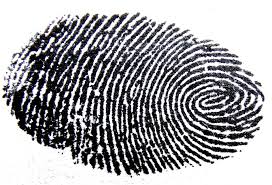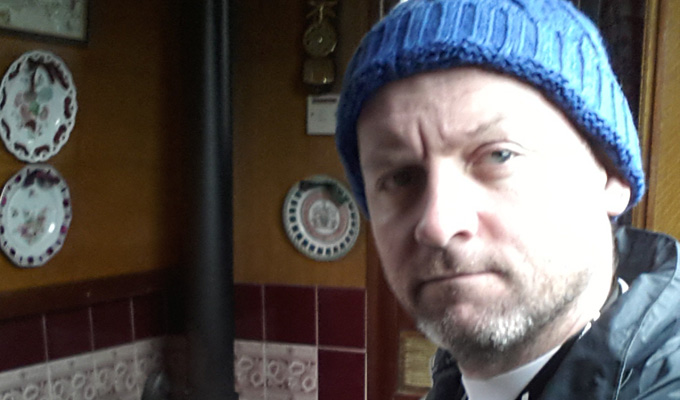|
Nominated BEST TRUE-CRIME PODCAST at British Podcast Awards 2018, The Telegraph's Top Five True-Crime Podcasts, The Guardian's Podcast of the Week and iTunes Top 25. Subscribe via iTunes, Spotify, Acast, Stitcher and all podcast platforms.
Fingerprint powder. What is it, how does it work, and how can you beat it?
We’ve all seen it used on crime scene investigations, they twiddle and twirl a fine brush of dark powder over a desk and suddenly we see some fingerprints, someone gets arrested – case closed. So what is fingerprint powder used on? Everything? Nope. Powder is one of several methods used by forensics to detect, copy or remove fingerprints from a scene; as more effective and less destructive methods such as close-up photography, clear adhesive tape and the removal of the object is preferred, so dusting for prints is almost exclusively used for any evidence which is difficult to remove from the crime scene; such walls, windows, desks, floors, etc. How does it work? Well, if you look at your fingers, palms or feet, you’ll see a series of very fine, very unique friction ridges on the skin. Not only do these epidermal ridges assist us in gripping rough surfaces and improve our grip on wet surfaces, they also amplify our sensory nerves in the perception of fine textures – that’s why our fingers and feet are super sensitive. Now, across the tops of these epidermal ridges are the natural oily secretions from the sweat gland. So when you place a finger, palm or foot on a surface, your skin leaves a secretion of oil, in the shape of the peaks of the ridges as the ridge itself doesn’t secrete any oil, and the fingerprint powder sticks to that oily residue. What is it made from? Difficult to answer. Historically, Lycopodium powder was used, it’s a yellowy dust-like powder made from the dry spores of clubmoss and ferns, the downside being that these spores were highly flammable, which is not good. The most common powder currently in use is Aluminium powder, which is fine, dark, malleable, it doesn’t congeal or clump and it shows up on a variety of surfaces, but there is no single fingerprint powder which is perfect, as different surfaces require different powders with different properties. What makes a good fingerprint powder? Four categories. #1 Fineness – as the finer the powder, the greater the details of the print. #2 Adhesion – the powder must adhere to the oil secreted, and not the rest of the surface print #3 Sensitivity – the powder needs to adhere to the surface, but without it warping the delicate oily residue in its application. Some powders are applied by fine brushes, some have powder blown across them, and magnetic powders are also used, where metallic particles are gently moved into the oily print using a magnetic applicator. This method causes the least damage to the print. #4 Colour – the darker the surface the fingerprint is on, the lighter the powder that is used, otherwise a black print on a black table top would be unrecognisable. Best and worst surfaces to get a clear fingerprint off?
So, you’re probably thinking, there’s one way to ensure I never leave a fingerprint at a crime scene and that’s to wear gloves? Am I right? Wrong. That’s the mistake that all criminals makes, and they think that wearing gloves will make them undetectable, but there is such a thing as a glove print. Glove prints are fingerprint-like impressions left by the wearer of the gloves which are just as unique as human fingerprints, glove prints have been used since 1971 to successfully convict offenders, with the first Glove Print Database established by the Derbyshire Police Force, and almost all types of gloves leave prints. For example: Latex gloves (or any rubber, plastic or vinyl); because they’re lightweight, cheap, a tight fit and flexible, criminals like these gloves as it allows their fingers to be dexterous, but because the material is thin, the oil from their fingers can pass through the material onto the surface, or (as they put on the gloves) their oil residue becomes adhered to the outside of the glove, which provides a perfect print if the glove is found, or that oil can be transferred onto a surface, and all secreted oil contains DNA. Leather gloves (aka murderer’s gloves) wool/cotton/fabric gloves; have good grip and are durable, but the surface of these gloves are as unique as a fingerprint, owing to its wear and tear which cause unique ridges, cuts and grooves in the material. And as these gloves can cause the wearer’s hands to sweat even more than it usually would, this increases the amount of dirt and grit which soaks into the grain of the glove (making the glove’s own print even more unique), and worse still, providing even more sweat… which contains DNA. Of course, if you want to make sure that you don’t leave any fingerprints at a crime scene, the only way to not get caught is to shave off your epidermal ridges (youch), soak your hands in hydrochloric acid (ooh), peel off your skin (aah), cut off your hands yikes), or - better still - don’t become a criminal in the first place, you knob. And that, is my top tip for the week.
If you found this interesting? Check out the Mini Mile episodes of the Murder Mile UK True-Crime Podcast, or click on the link below to listen to an episode.
Michael J Buchanan-Dunne is a writer, crime historian, podcaster and tour-guide who runs Murder Mile Walks, a guided tour of Soho’s most notorious murder cases, hailed as “one of the top ten curious, quirky, unusual and different things to do in London”, nominated "one of the best true-crime podcasts at the British Podcast Awards 2018", and featuring 12 murderers, including 3 serial killers, across 15 locations, totaling 50 deaths, over just a one mile walk
2 Comments
7/2/2020 22:57:09
Thank you for informing me that to grab a fingerprint off of a surface you have to get a powder to adhere to the oils of a print. Yesterday, I was looking into new career paths and job requirements. One job required fingerprinting. I would think that companies have to look for very specific services to take care of that requirement.
Reply
Your comment will be posted after it is approved.
Leave a Reply. |
AuthorMichael J Buchanan-Dunne is a crime writer, podcaster of Murder Mile UK True Crime and creator of true-crime TV series. Archives
July 2024
Subscribe to the Murder Mile true-crime podcast
Categories
All
Note: This blog contains only licence-free images or photos shot by myself in compliance with UK & EU copyright laws. If any image breaches these laws, blame Google Images.
|




